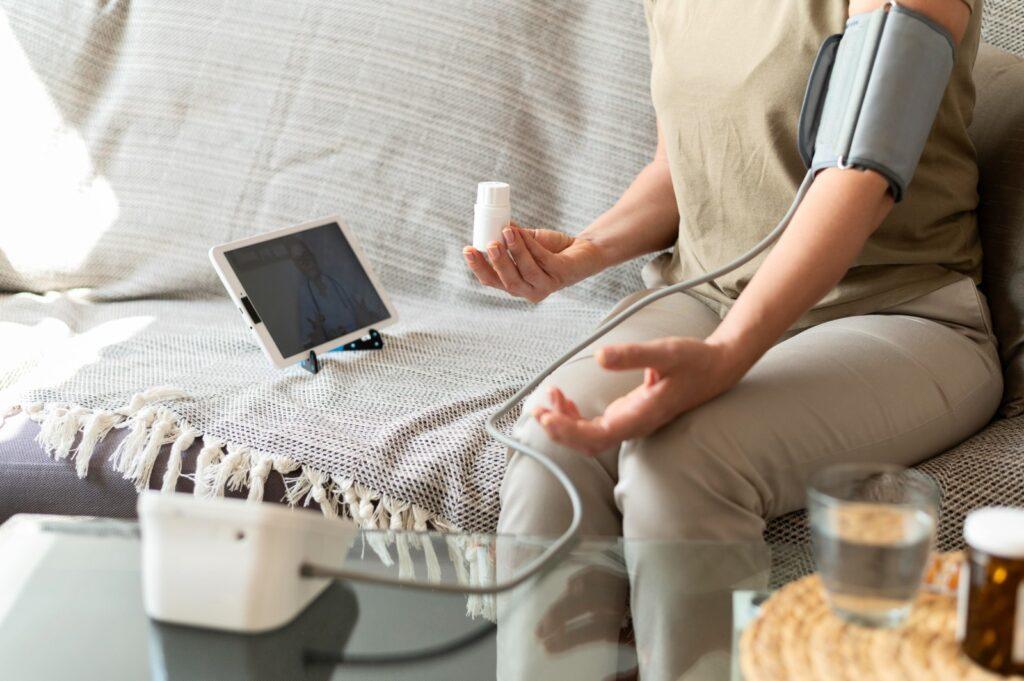

Regular monitoring of blood pressure is essential for managing hypertension and ensuring overall cardiovascular health. With the availability of home blood pressure monitors, individuals can conveniently measure their blood pressure in the comfort of their own homes. Self-monitoring provides valuable insights into blood pressure fluctuations and helps individuals and their healthcare providers make informed decisions regarding treatment. In this article, we will discuss valuable tips for self-monitoring blood pressure at home, including preparation, technique, frequency, and record-keeping, to ensure accurate and reliable results.
Preparing for Self-Monitoring
Before starting self-monitoring of blood pressure at home, it is important to prepare appropriately. Here are some key steps:
1. Choose the right home blood pressure monitor: Select a clinically validated and accurate home blood pressure monitor that meets international standards. Consult with your healthcare provider for recommendations based on your specific needs.
2. Understand the equipment: Read the instruction manual provided with the blood pressure monitor to familiarize yourself with its features, buttons, and proper usage. This will ensure accurate measurements and avoid errors.
3. Select the right cuff size: Ensure that the cuff size is appropriate for your arm. Most monitors offer adjustable cuffs, but refer to the manufacturer’s guidelines to determine the correct size for accurate readings.
4. Avoid stimulants: Before taking your blood pressure measurement, avoid consuming caffeine, tobacco, or engaging in physical activities that may temporarily raise your blood pressure. Rest for at least 5 minutes in a quiet and comfortable environment.
5. Empty your bladder: Urinate before measuring your blood pressure, as a full bladder can temporarily elevate blood pressure readings.
Techniques for Accurate Measurements
1. Proper positioning: Sit in a comfortable chair with your back supported and feet flat on the ground. Rest your arm on a flat surface, such as a table, at heart level. Avoid crossing your legs, as it can affect the accuracy of the measurement.
2. Relax and be still: Take a few deep breaths to relax and calm yourself before starting the measurement. Sit still and avoid talking during the process, as movement and conversation can influence the readings.
3. Apply the cuff correctly: Wrap the cuff around your upper arm, just above the elbow, ensuring a snug fit. The cuff should be positioned in line with your heart. Follow the manufacturer’s instructions for applying the cuff properly.
4. Take multiple measurements: Measure your blood pressure at least two or three times, with a gap of one to two minutes between each reading. Discard the first reading and record the average of the subsequent measurements for the most accurate result.
5. Monitor at consistent times: Establish a routine for monitoring your blood pressure, preferably at the same time each day. Consistency helps identify patterns and trends in your blood pressure readings.
6. Avoid white-coat syndrome: Some individuals experience anxiety or elevated blood pressure in medical settings. To minimize this effect, self-monitoring at home provides a more relaxed and accurate representation of your typical blood pressure.
Frequency and Record-Keeping
1. Consult with your healthcare provider: Discuss with your healthcare provider how often you should monitor your blood pressure at home. This may vary depending on the severity of your hypertension, overall health condition, and the effectiveness of your current treatment plan.
2. Keep a blood pressure log: Maintain a record of your blood pressure readings in a logbook, smartphone app, or digital spreadsheet. Include the date, time, and the average of multiple measurements taken. This log will serve as a valuable resource during healthcare appointments and allow you to track any changes over time.
3. Share your readings with your healthcare provider:
4. Recognize patterns and triggers: Analyze your blood pressure readings over time and identify any patterns or triggers that may affect your blood pressure. This information can help you and your healthcare provider make adjustments to your treatment plan or identify lifestyle changes that may be beneficial.
5. Communicate with your healthcare provider: Regularly share your blood pressure log and readings with your healthcare provider. This information provides valuable insights into your blood pressure trends and allows for informed decisions regarding medication adjustments or other treatment modifications.
6. Be aware of potential errors: Keep in mind that self-monitoring may sometimes yield inaccurate readings. Factors such as improper cuff placement, movement during measurement, or using a faulty or outdated blood pressure monitor can affect the accuracy of your readings. Regularly check your monitor for proper calibration and maintenance.
7. Seek guidance when needed: If you have any questions or concerns about your blood pressure readings or the monitoring process, consult with your healthcare provider. They can provide guidance, offer clarification, or make recommendations based on your specific situation.
8. Regularly check your monitor’s accuracy: Periodically compare your home blood pressure monitor’s readings with those taken at your healthcare provider’s office. This will help ensure that your monitor remains accurate and reliable.
Conclusion
Self-monitoring blood pressure at home is a valuable tool for managing hypertension and maintaining cardiovascular health. By following proper techniques, preparing appropriately, and keeping consistent records, you can ensure accurate and reliable blood pressure measurements. Regular communication with your healthcare provider and sharing your blood pressure log will facilitate collaborative decision-making and effective management of your blood pressure. Remember, self-monitoring is not a substitute for professional medical advice, and it is essential to consult with your healthcare provider for personalized guidance and recommendations.
